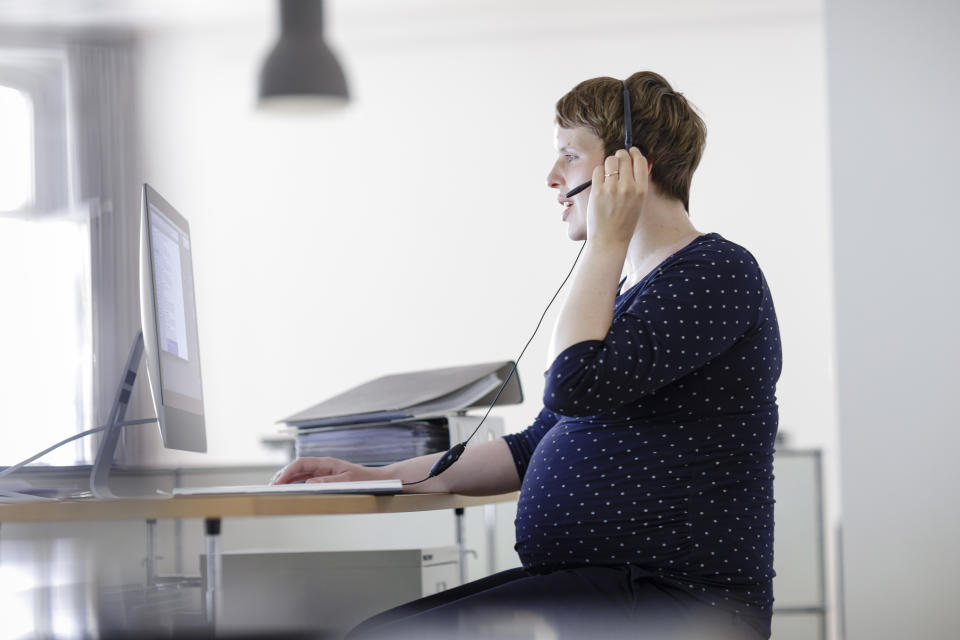The radical ways global companies are closing the gender pay gap

More than three out of four companies in the UK pay their male staff more on average than their female staff, it was revealed earlier this year. The data, published by firms with more than 250 employees, found businesses’ highest paid jobs are mostly taken by men – while the number of women decreases the further up the pay scale you go.
It’s clear women are being short-changed, so the next question is, what should employers do to close the yawning gap between men and women’s pay?
Many companies have introduced diversity training to make employees aware of gendered and racial bias in the workplace, but there is little evidence to suggest such schemes actually work. In 2016, researchers Alexandra Kalev, an associate professor of sociology at Tel Aviv University, and Frank Dobbin, a professor of sociology at Harvard University, found diversity training had negligible long-term effects.
Some firms are taking a more direct approach by revising the salaries of their female staff. Earlier this year, the US cloud-based software company Salesforce announced it had spent $2.7m adjusting the salaries of 6% of its global 30,000 person workforce, to help address inequality regarding gender, race and ethnicity.
Gender bias in job ads

The gender pay gap isn’t just down to being paid equally, though. Gender bias in jobs adverts also play a part, with the use of wording aimed at men decreasing the likelihood of job applications from female candidates, particularly in senior roles.
Last year, research by TotalJobs found that out of 75,000 job ads, 478,175 words were thought to carry a gender bias, with ads for social care and admin roles most likely to use female-biased language, at 87% and 67% respectively. Sales and management roles were among the ads most likely to use male-biased language, such as lead, analyse, active and confident.
Companies including Microsoft, Slack, Twitter and Dropbox are working to address this by using the service Textio, an online bias detector, to scan their job ads.
Even adding salary information to job ads can make a difference, too. Research published this month by the global job site Indeed found that when job ads for leadership positions omit salary information, the median gender pay gap is typically 7.2% worse.
“The findings show that choosing words carefully can have a positive impact on inclusive hiring and gender pay equality, but it’s the words employers omit that can also have an impact – especially when it comes to the pay gap in leadership positions,” says Paul Wolfe, senior vice-president of human resources at Indeed.
“Genuinely fair job design, mirrored in a strong job description, which includes equal opportunity phrases will help create more diverse and inclusive organisations, which in turn is then likely to erode the gender pay gap.”
Vodafone and Unilever are also working to diversify their workforce through their recruitment process. Unilever uses a start-up called Pymetrics, which uses neuroscience and AI to find the right person for a position while removing gender bias – which they say has helped them recruit from more diverse backgrounds.
Accenture, the global management consulting and professional services firm, is attempting to close the pay gap in multiple ways. The company not only has clearly defined gender targets to increase the number of women across a range of different positions, but when it comes to recruiting, it offers referral bonuses for women and minority hires and sponsorship for the company’s senior women to advance their careers.
Motherhood penalty

Another key factor when it comes to unequal pay is the motherhood penalty. In 2017, a study by the University of Paris-Saclay found mothers earn earn 3% per hour less for each child they have compared with childless women working in similar jobs.
Arguably, one way to address this is to provide incentives for men to take time off for childcare – so women can return to work or work more hours, increasing their chances of getting up the career ladder. Facebook, for example, offers new dads four months of paid leave. Netflix offers up to one year of paid parental leave for salaried employees on the streaming-video side of the firm.
And it might seem drastic, but parenting in the workplace is also being employed by some businesses to help women juggle work and childcare more flexibly. Since 2003, Goldman Sachs has had an onsite nursery in their London offices on Fleet Street, which takes children between the ages of three months and 12 years.
This is rare, though – in part because it is expensive to run a creche – with just 5% of businesses in the UK offering childcare in the workplace, according to 2016 figures from the Chartered Institute of Personnel and Development.
According to the World Economic Forum’s Global Gender Gap Report 2017, it’s going to take a further 217 years to close the pay gap. So while hiking up women’s salaries and allowing kids in the office might appear radical moves, it might be these changes that make workplaces more women-friendly.
To find out to navigate a toxic work environment, download Yahoo Presents Its a Jungle Out There podcast on Apple Podcasts, ACast, or Google podcasts to listen while on the go.


 Yahoo Finance
Yahoo Finance 